Lisbon
Checking out Yuma and Oeiros
After our very brisk entry into Lisbon’s waters the evening before, we treated ourselves to a long sleep-in within the protection of Oeiras’ marina – a chance to recover from all the excitement. An inspection of Yuma revealed that we’d broken slider at the top of the mainsail which would need to be replaced before we could haul up the mainsail again. Aside from that, we, and more importantly Yuma, seemed to have gotten off lightly following our windy episodes off the Cabos Raso and Cascais.
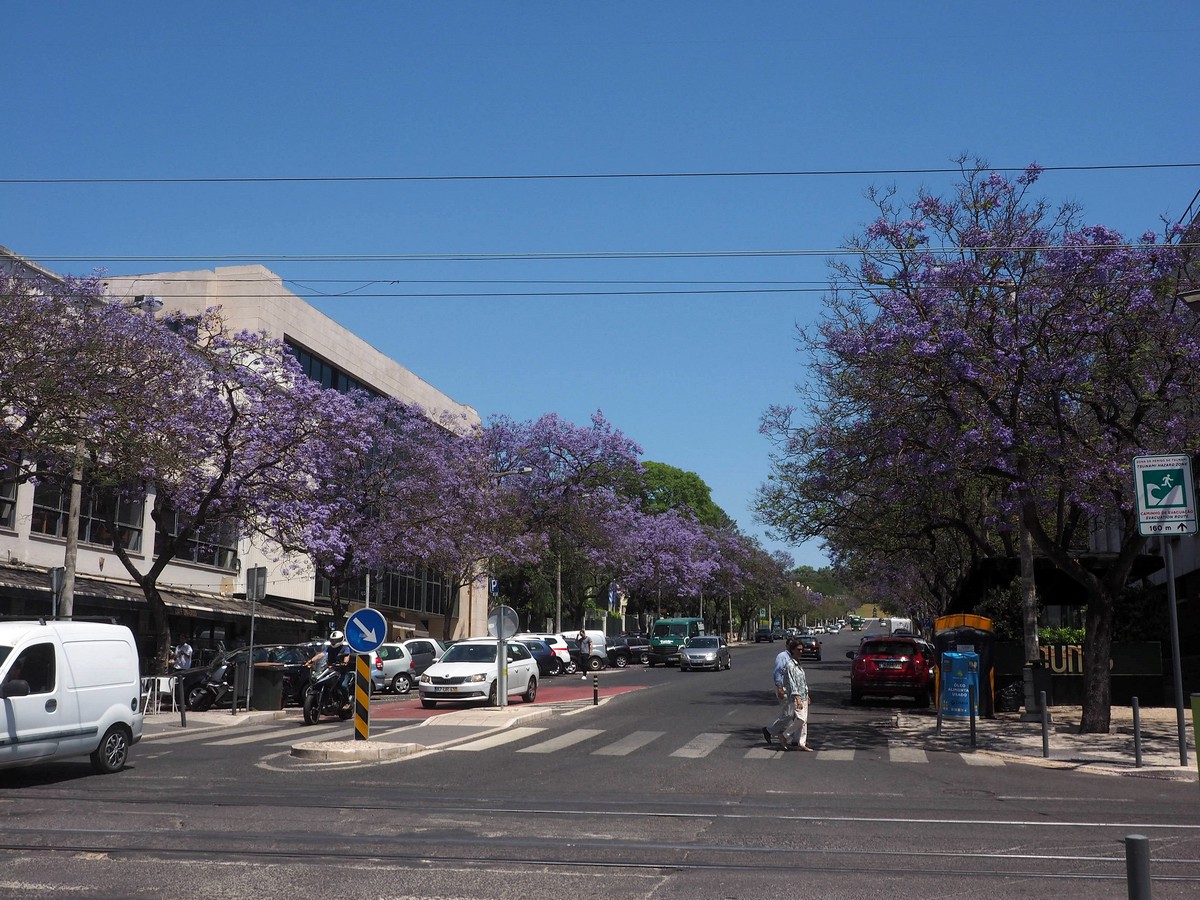
Beautiful Jacaranda in flower in Lisbon – I (F) love Jacarandas, a genus of trees native to the Americas I have only ever seen in Australia.
Having spent 13 hours underway on Yuma the day before, we were keen to stretch our legs. So, we explored the marina and the beaches to the west of Oeiras, namely Praia da Torra and Praia de Carcavelos. Off the first beach is a very impressive fort, Forte de São Julião da Barra, which is, unfortunately, still being used by the Portuguese military and so is out of bounds for visitors like us.
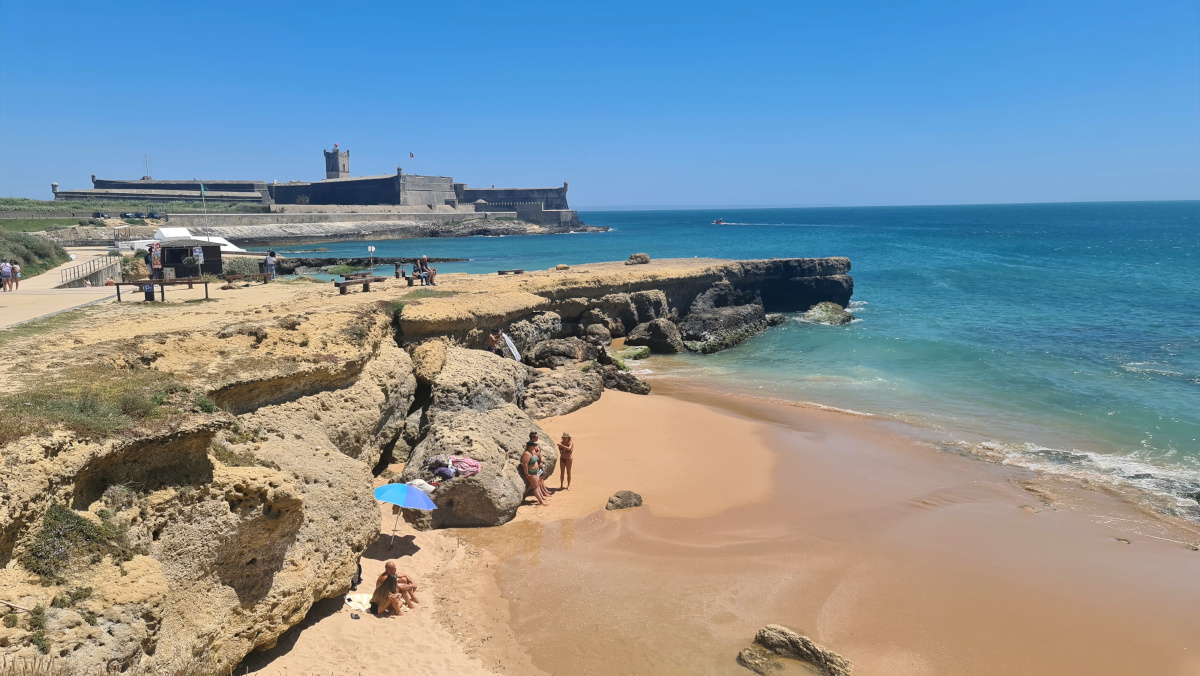
Beautiful beaches, with Forte de São Julião da Barra in the background.
The beaches were beautiful, nice fine sand with rocky headlands and full of people enjoying the first bit of sunshine in Lisbon of the year. It had been, so we were told, a long and rainy spring.
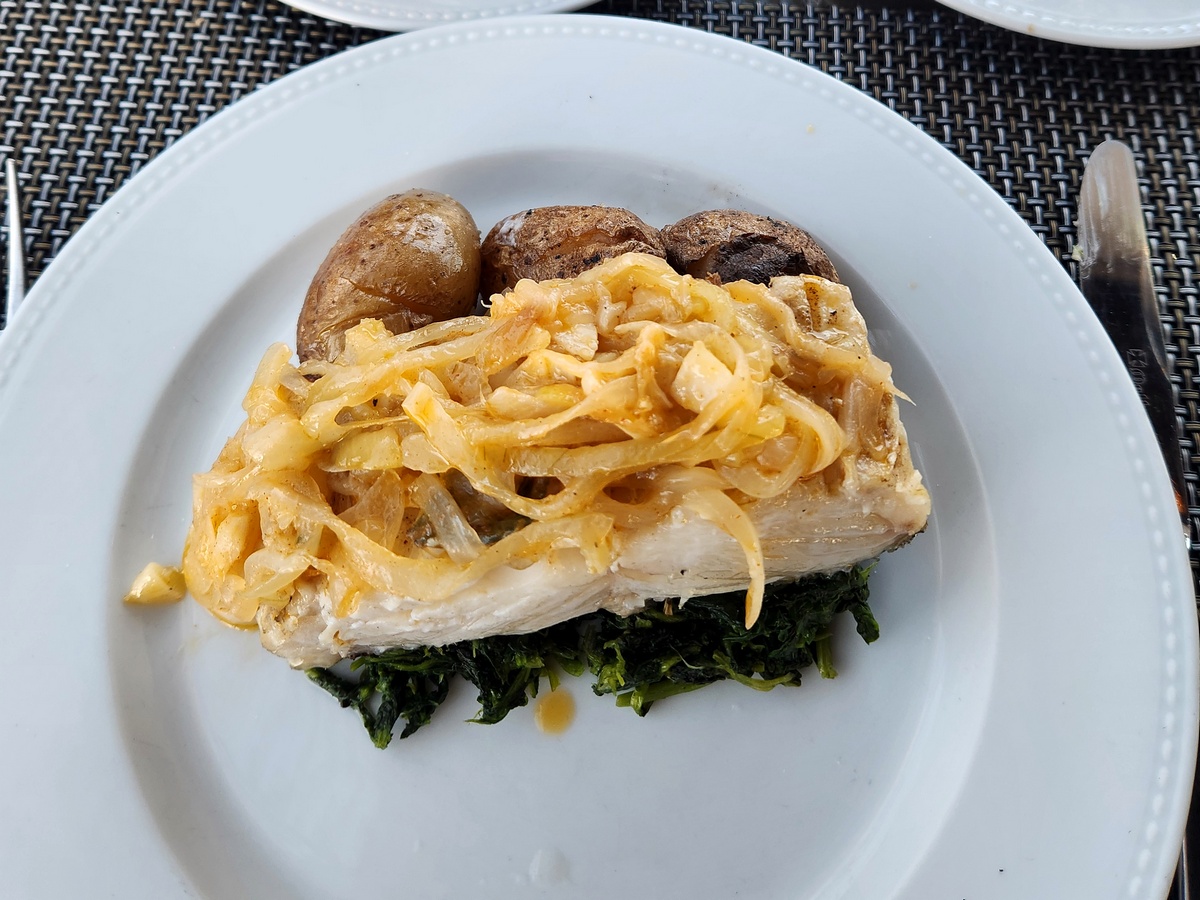
Another bacalhau version. It has been said…’Why would you go though the hassle of salting, drying and curing for months and, in turn, soak and cook the bacalhau, while you can it eat fresh?’ It must be tradition.
Another blast from the past
One main reason for pulling in at Lisbon was to catch up with Paula Sobral. In 2015, she had done a sabbatical with me (F) at AIMS which proved pivotal in establishing what has since become the AIMS Marine Microplastics Team (https://www.aims.gov.au/research-topics/environmental-issues/marine-microplastics). Aside from her contribution to this, we also participated in what colleagues at the time described as ‘the trip of envy’, namely an 8-day field trip to the Australian Kimberley on AIMS’ research vessel the Solander. Enough reason to get in touch and find out what Paula had been up to since then.
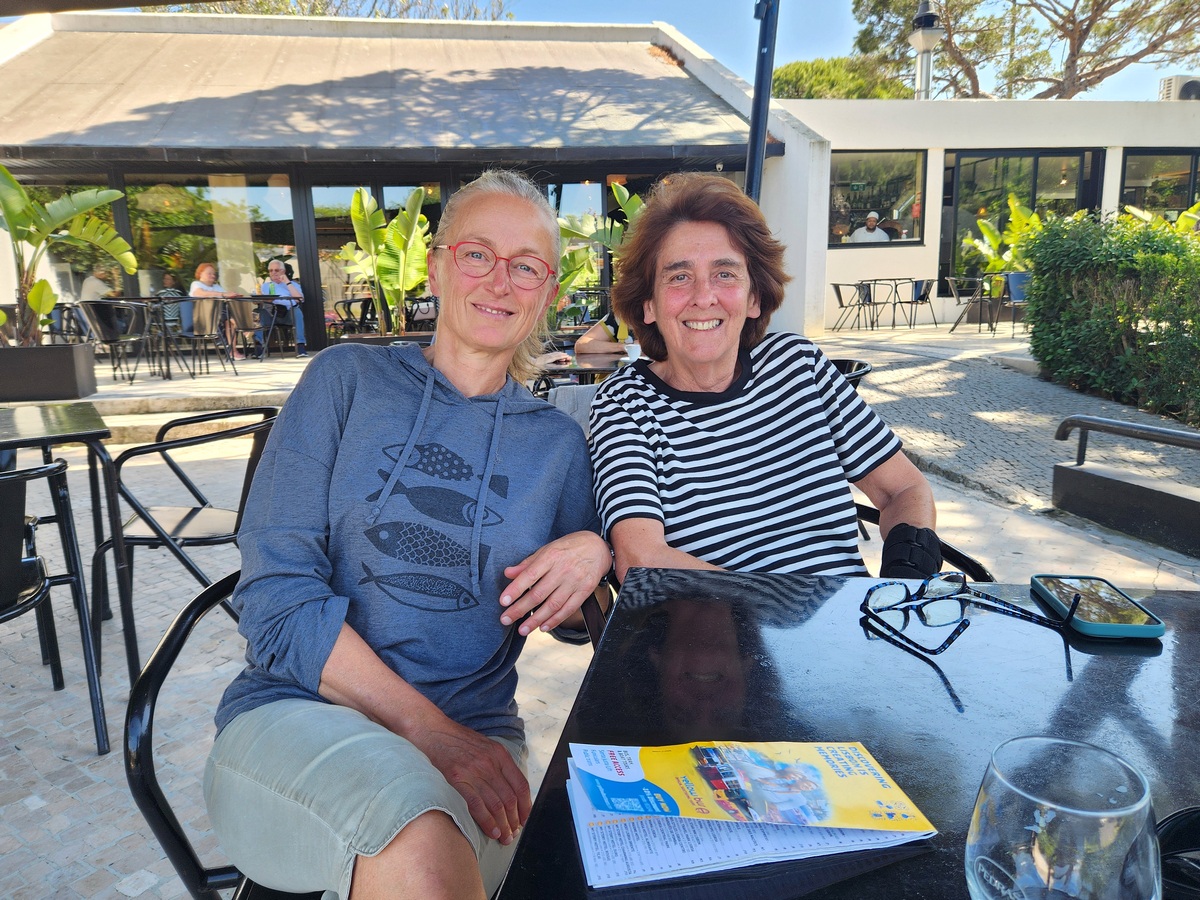
Catching up with Paula Sobral.
To our surprise, given the size of Lisbon, she lived only about a 30min walk from Oeiras, in Cascais. We caught up over a picnic lunch at the Jardim da Torre de Belém, sipped cocktails at a café off her local beach, Praia de Carcavelos, and were treated to a very tasty dinner at her local fish restaurant in Cascais. We also got to see her apartment with various nooks and crannies and balconies tucked away over two levels, and full of souvenirs from all her travels – what an amazing place! It was wonderful to catch up again, and we parted with recommendations from Paula for places to visit in Portugal on our way to the Med (while avoiding orcas, of course).
Modern takes on azulejo, Portuguese ceramic tilework, in the streets of Lisbon.
Belém
While sheltering in Oeiras from an out-of-control Nortada for a few days, we also got to explore the touristic delights of Lisbon. This was easily done as one of the main trainlines to the city centre runs along the north side of the Tagus River, and stops in Oeiras.
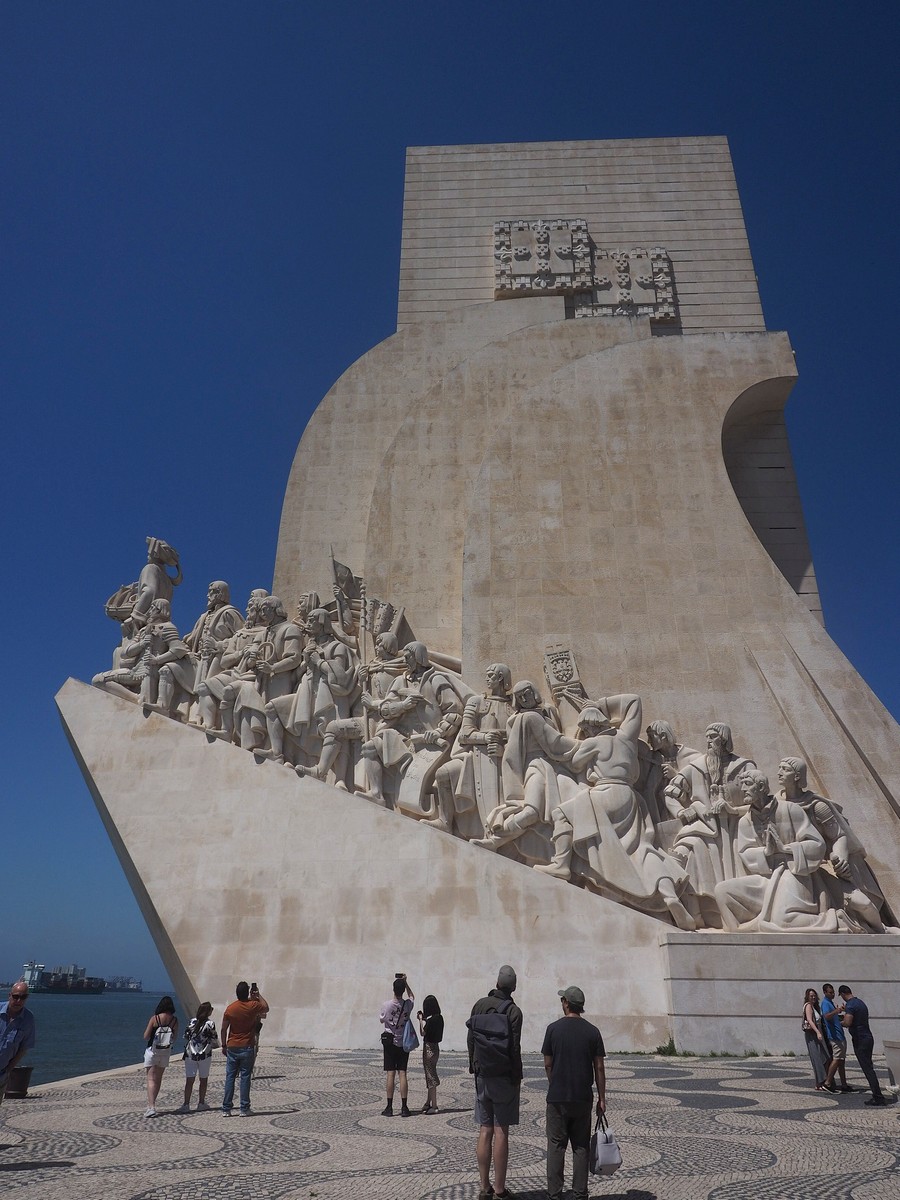
The huge Padrão dos Descobrimentos, or Monument to the Discoveries, in Belém.
Our first stop was Belém, the riverside suburb that houses, among other things, various monuments and museums related to the Portuguese Age of Discoveries. For us sailors, the more interesting ones were the 50m Compass Rose mosaic showing the maritime routes the Portuguese carracks and caravels opened up in the 15th and 16th century, and the Maritime Museum showing more detail on how these Portuguese explorations unfolded at the time. Truly fascinating!
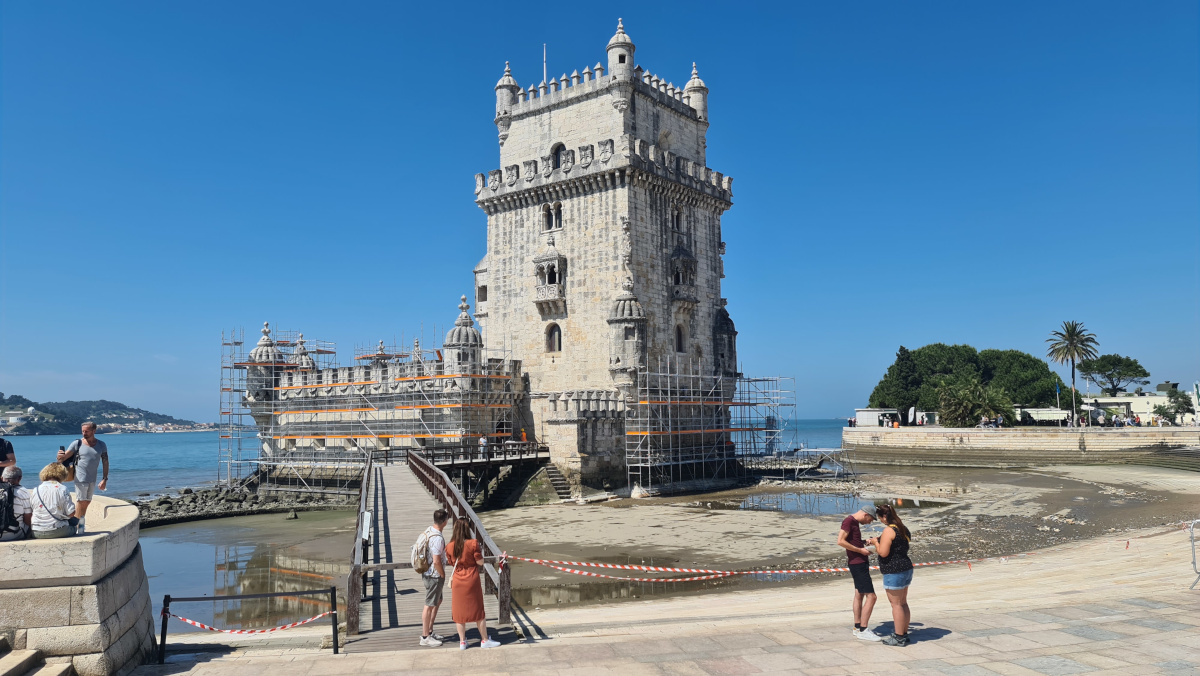
One of the tourist highlights in Belem, the Torre de Belém, a UNESCO World Heritage Site, was closed for renovations.
Even more so as these explorations don’t get much airtime in either Anglo or Dutch cultures. The former has its own explorers, like Cook, who played important roles in the establishment of the British colonial empire. The Dutch, on the other hand, have their ‘zeehelden’, or admirals, who successfully fought the Portuguese to steal their colonies (and associated trade routes) and contributed to establishing the Dutch colonial empire.
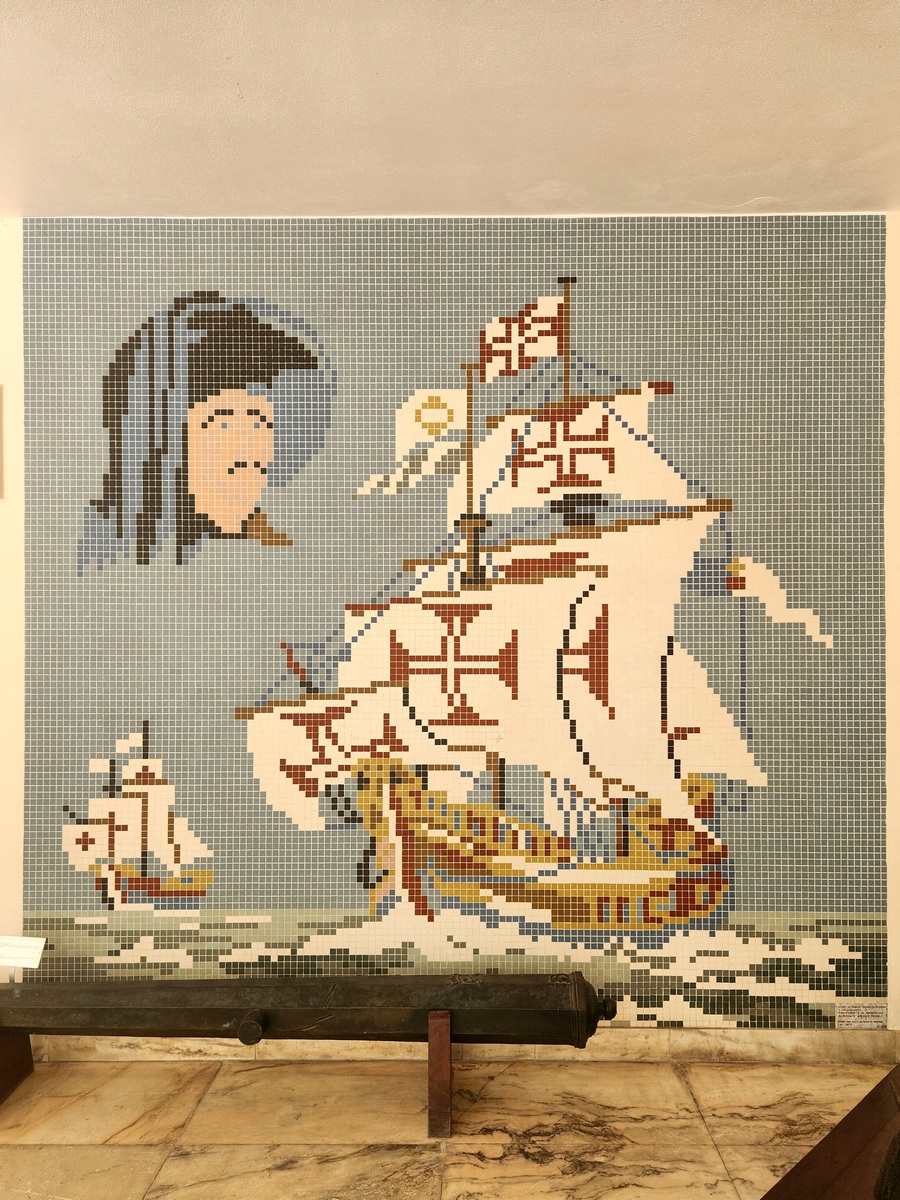
Nice tilework in the Maritime Museum.
The other place we were keen to visit was the tomb of Vasco da Gama in the Jeronimos Monastery – immortalized as Vasco Pyjama and his direction-finding duck by the late Australian cartoonist Michael Leunig. However, seeing the extremely long line-ups for the Monastry, and having learnt about his extremely brutal way of dealing with the locals in Portuguese colonies, we felt we could give him a miss without too much worry.
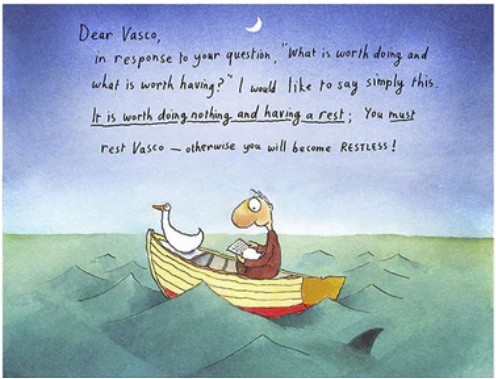
Vasco Pyjama and his direction-finding duck (From Michael Leunig).
Alfama and Bairro Alto
Having enjoyed Porto’s city centre (all except the hordes of tourists), we thought we’d explore Lisbon’s city centre as well (expecting hordes of tourists), in particular the two older areas of Alfama and Bairro Alto.
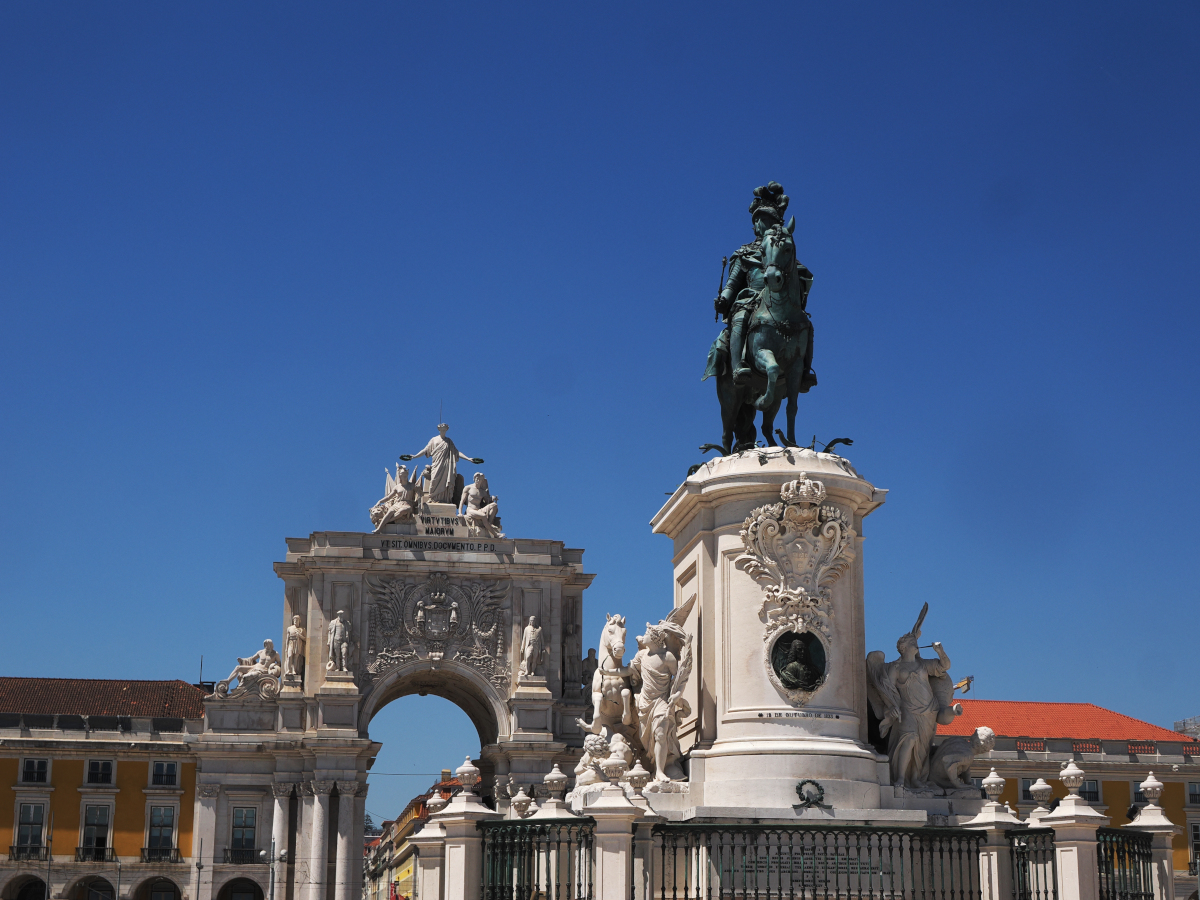
Statue of King José I, with the Rua Augusta Arch in the background, to honour and commemorate the reconstruction of Lisbon after the 1755 earthquake.
In Alfama, we visited the Castelo de São Jorge which, as is often the case for castles, was situated on top of a hill, making for a long and hot climb along Lisbon’s narrow streets. Luckily, we were able take a break in one of the many ice cream shops along the way. Several more ice cream stops were possibly and we were deeply tempted.
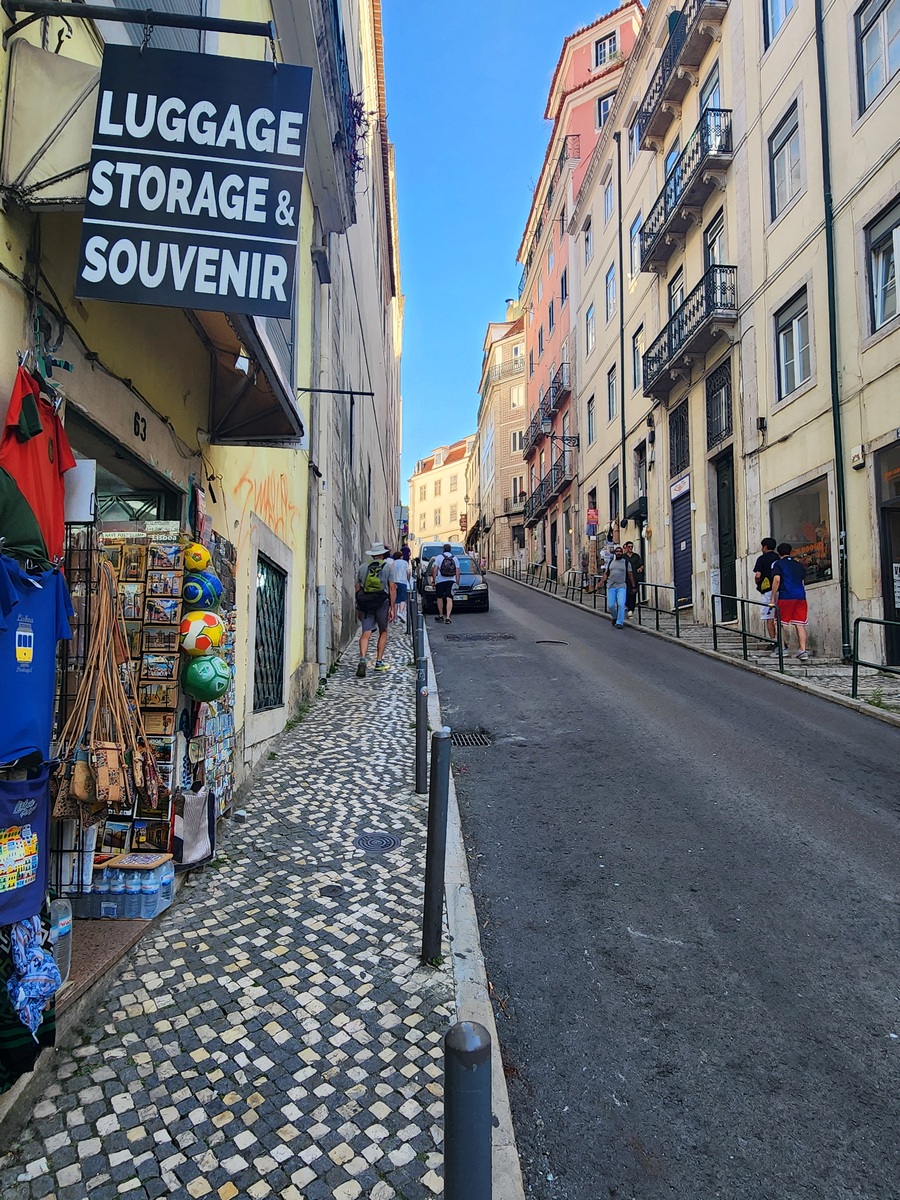
A steep climb through Alfama towards the Castelo.
Once up the hill and inside the castle, we enjoyed the spectacular views in all direction. Uncommonly for us, we joined what turned out to be a very interesting tour and learned that the oldest evidence of a settlement at the castle dates back to the 7th century BC. This was followed by the usual European way of successive occupations by whoever passed through at the time, in this case Phoenicians, Greeks, Romans, Visigoths, Moors and probably a few more along the way.
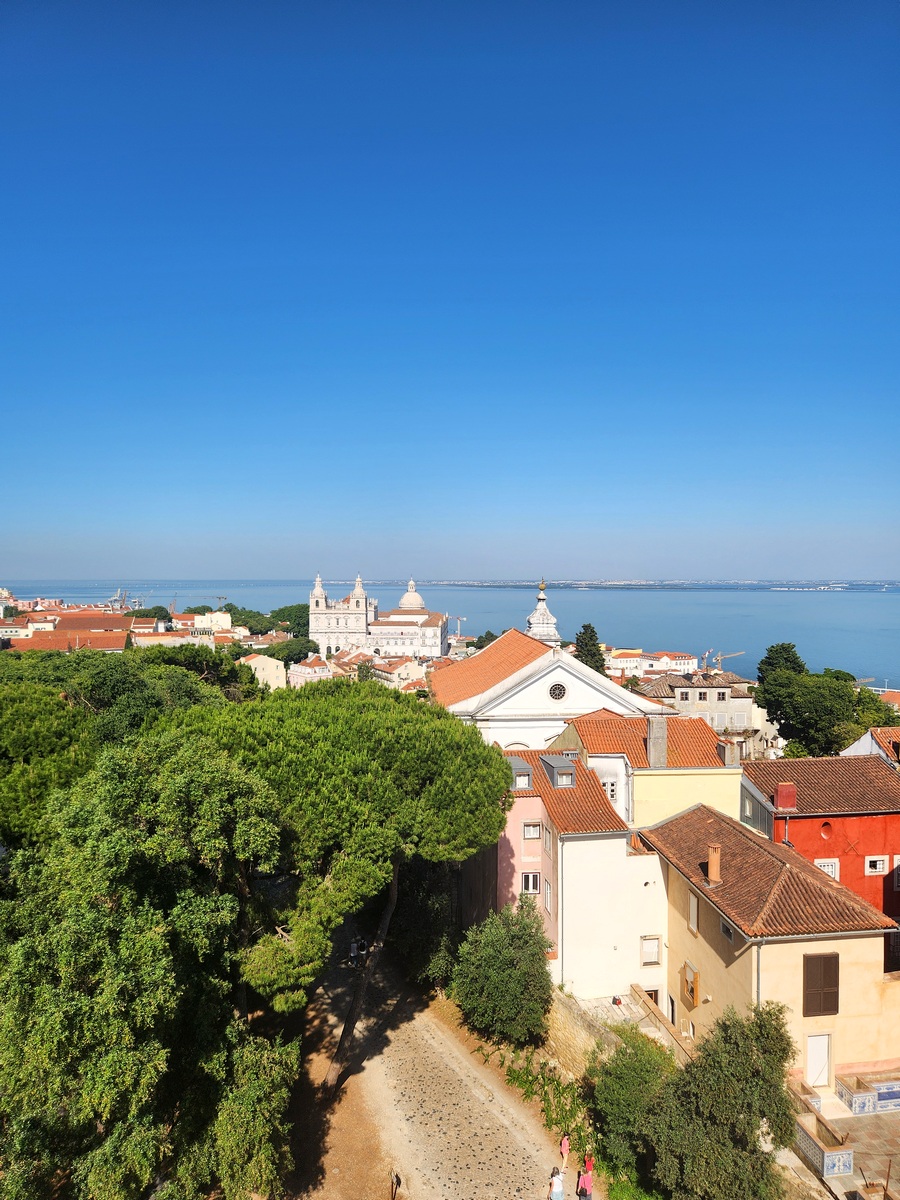
Gorgeous views over Alfama towards the Tagus river.
We also learned all about castle-warfare, what with entry ways designed to slope downwards so that blood and innards from frontline attacking soldiers would slide towards the rear troops trying to enter the castle – brutal and no doubt significantly adding to the already horrific conditions of battle. Other previous inhabitants included the Moorish elite, who were booted out in the 12th century, with remains from their houses still present inside the castle walls. The castle was extensively renovated under the government of the dictator Salazar and is now a national monument and museum.
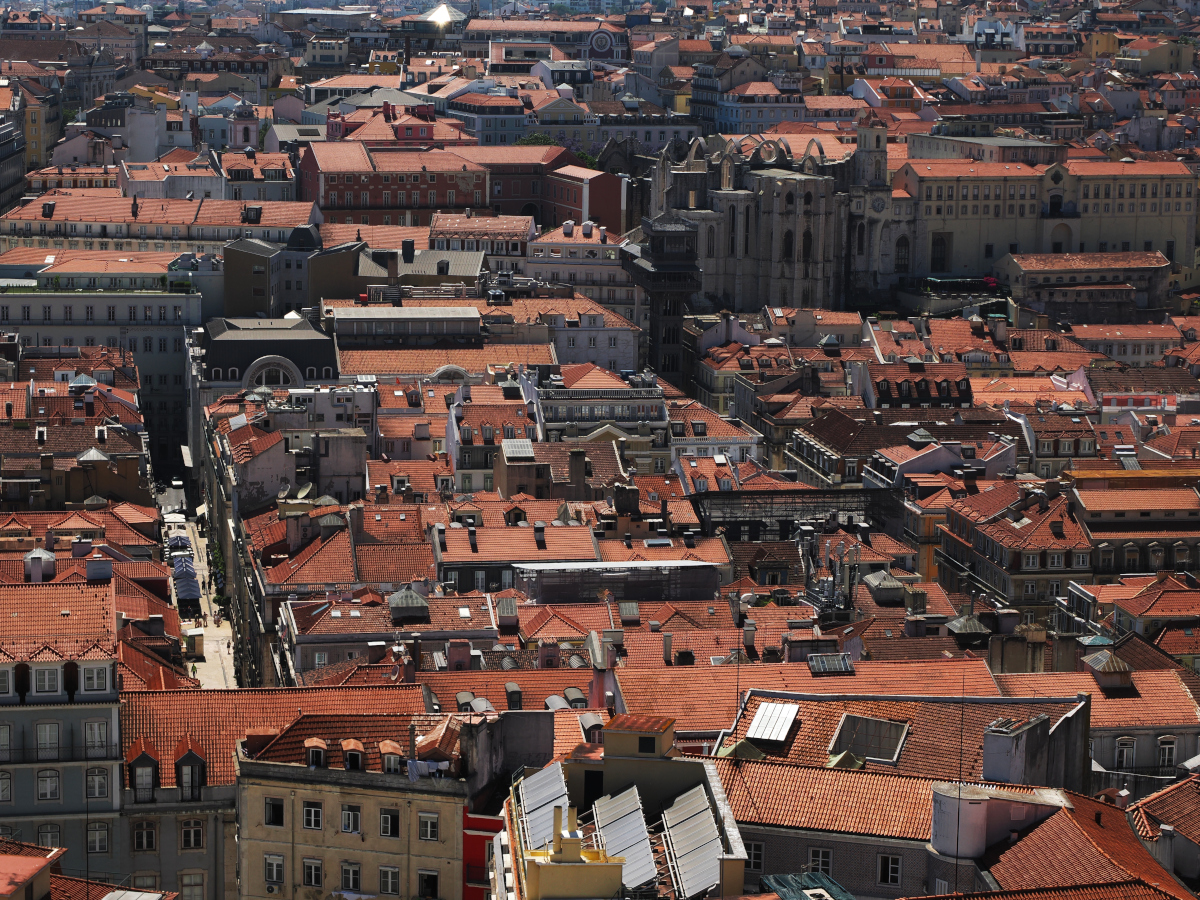
More great views, this time over red tiled roofs.
Bairro Alto turned out to be a bit of a disappointment. The old area has been taken over by (night)clubs blasting out English music, presumably catering for British tourists on hen and/or stag nights, or on getting-as-drunk-as-possible nights. Aside from these non-descript drinking places, everything was covered in ugly graffiti tags which unfortunately seems to become more common the further south we get.
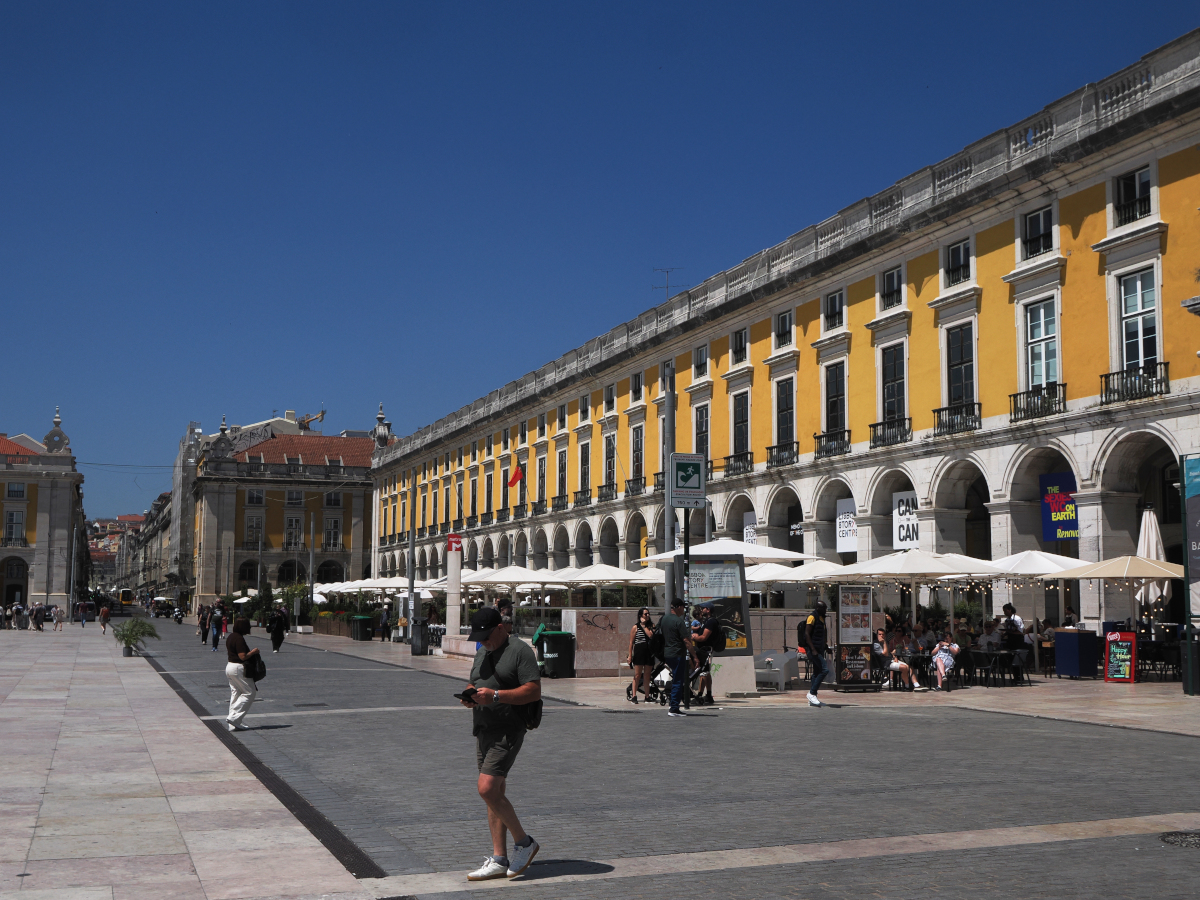
A nice plaza in central Lisbon somewhere.
The two Fado bars recommended to us by Paula were only available through pre-bookings, and with dinner included, and at (as forewarned by Paula) exorbitant prices. What a shame of what must have been a spectacular neighbourhood not that long ago!
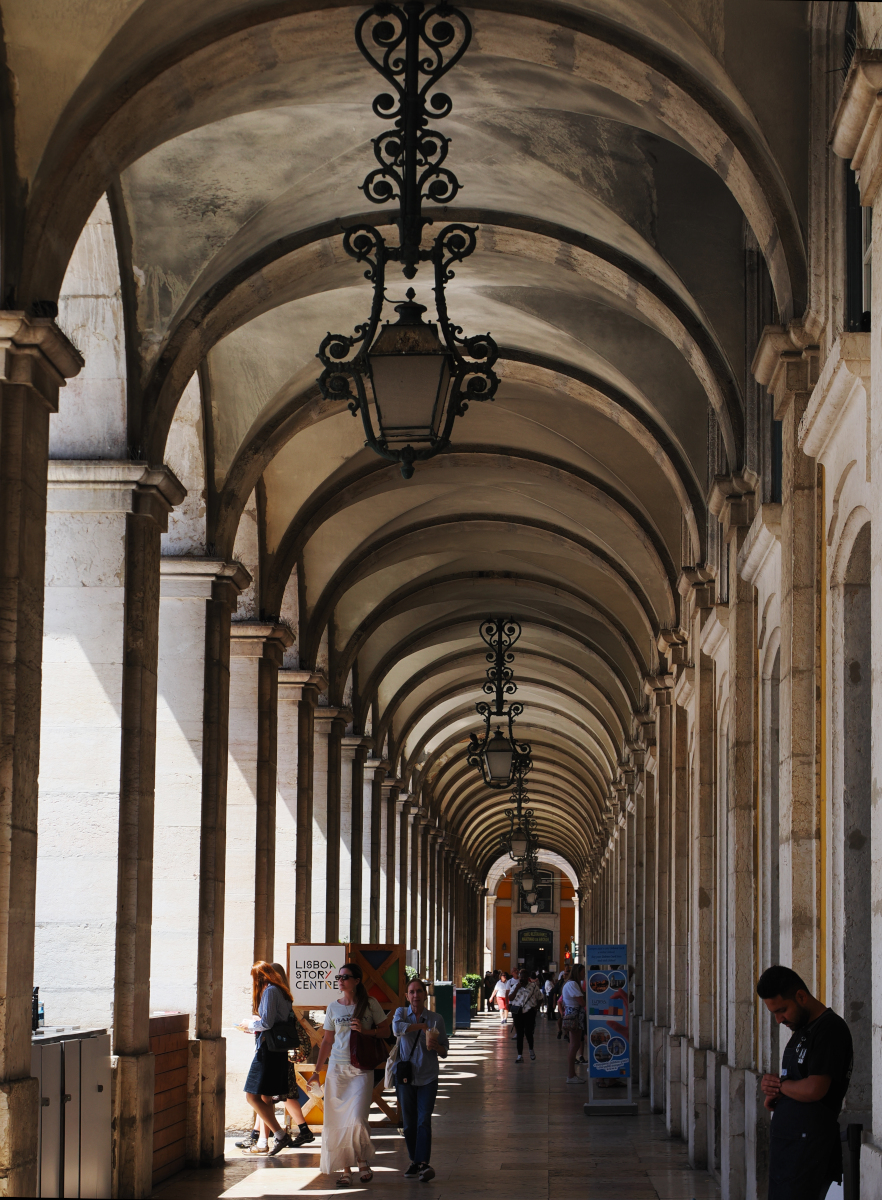
The colonnade running alongside the plaza in photo above.
Nevertheless, we had another lovely dinner in one of the many fish restaurants, and then slowly made our way back to Yuma to prepare for departure.

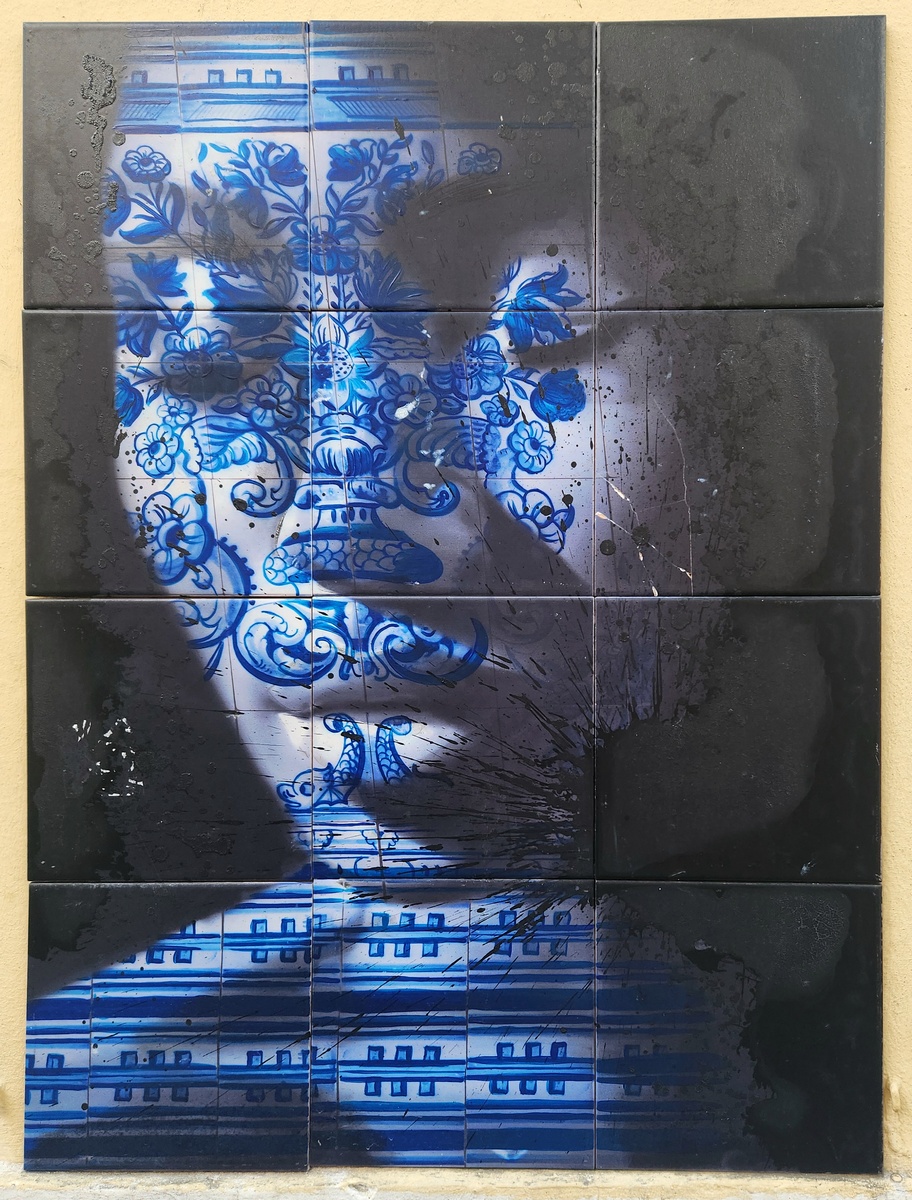
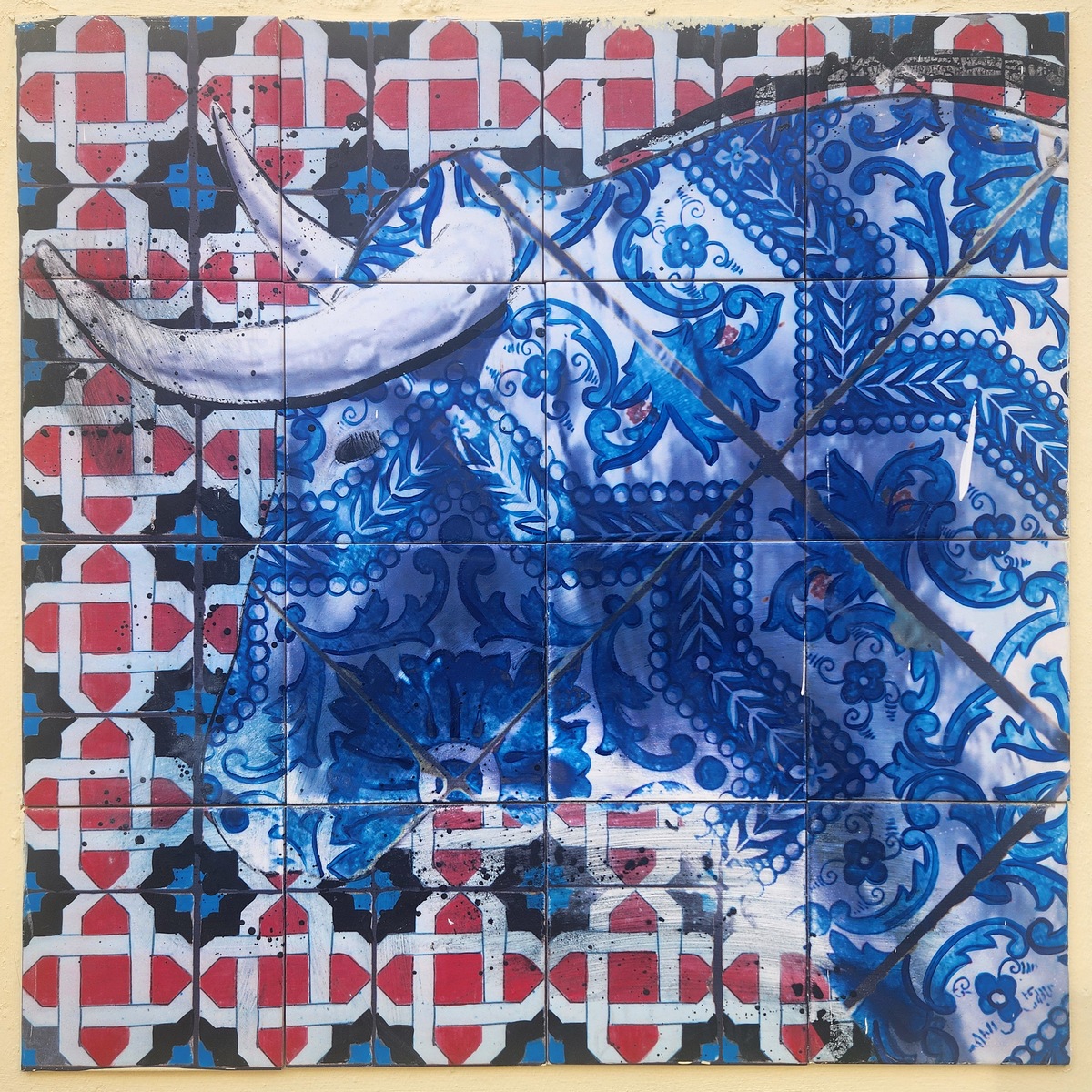
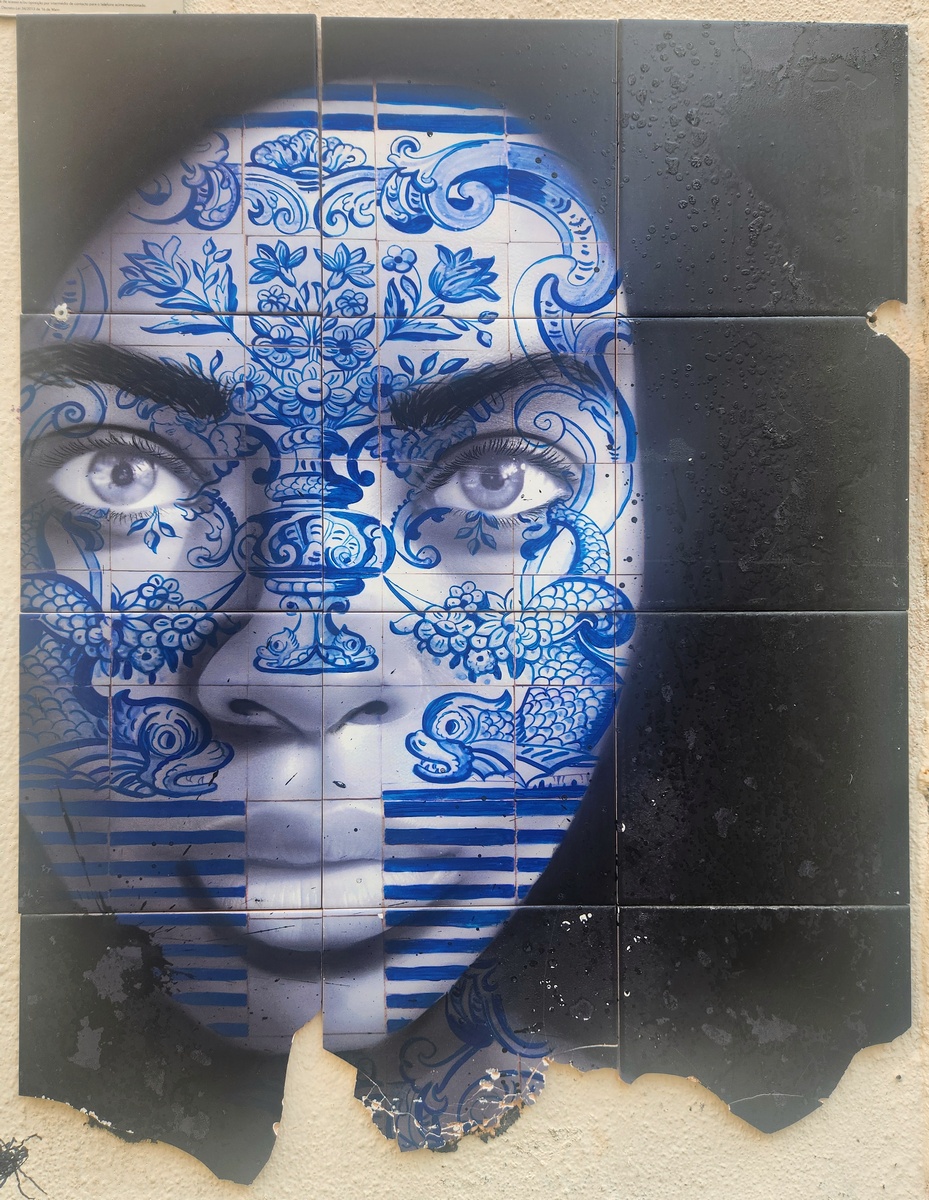
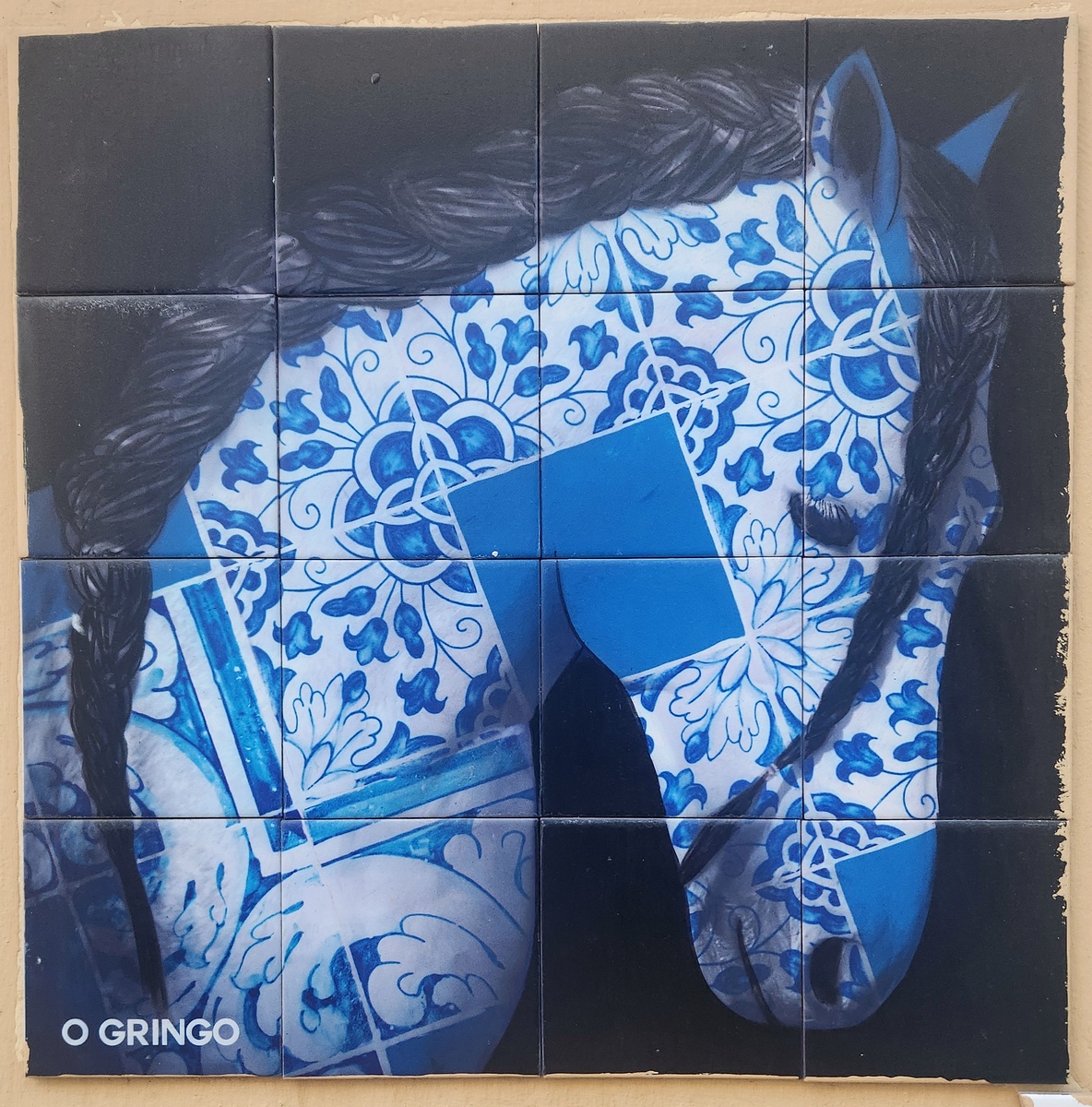

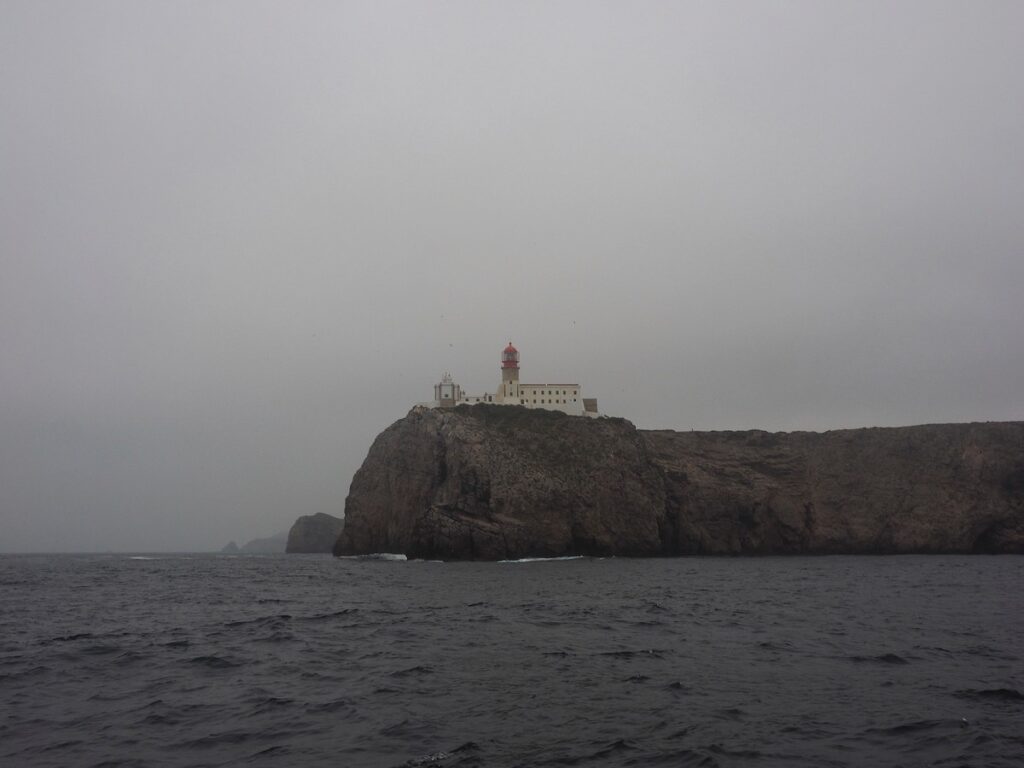
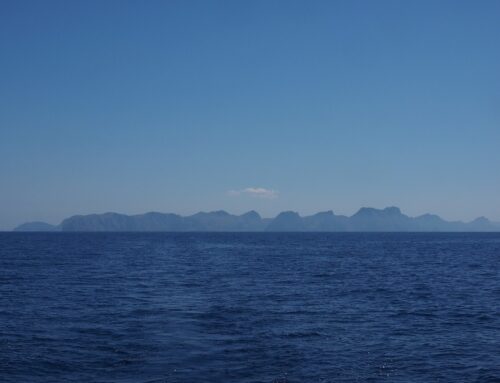

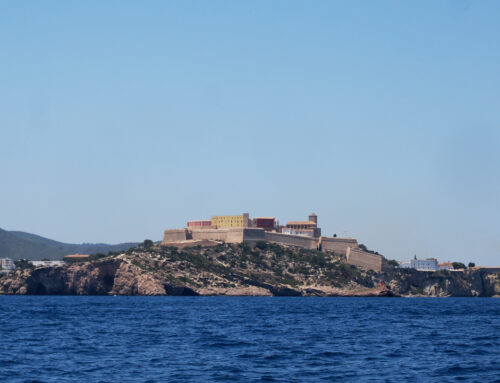
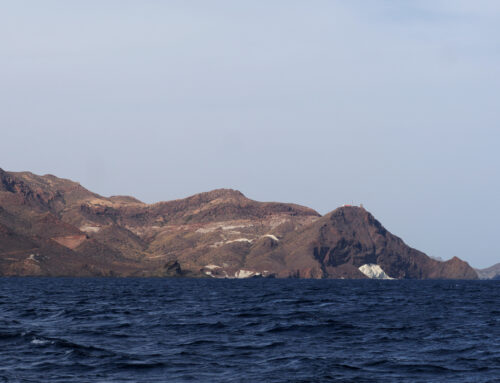
Those modern ceramics are stunning!!
Aren’t they just!
Have to say, despite the tourists I prefer the sound of your Lisbon / Porto stays than the windy 12hr entry into the area!
The windy bits weren’t bad, we just felt a bit foolish, the rest of the sailing was pretty damn nice. But yes, the stops in Porto and Lisbon were very enjoyable and there was a lot to see and do (and consume).
And, I guess being tourists ourselves we should complain too loudly
Prachtig dat keramiek!!
Mooi hè? Vond ik zelf ook.